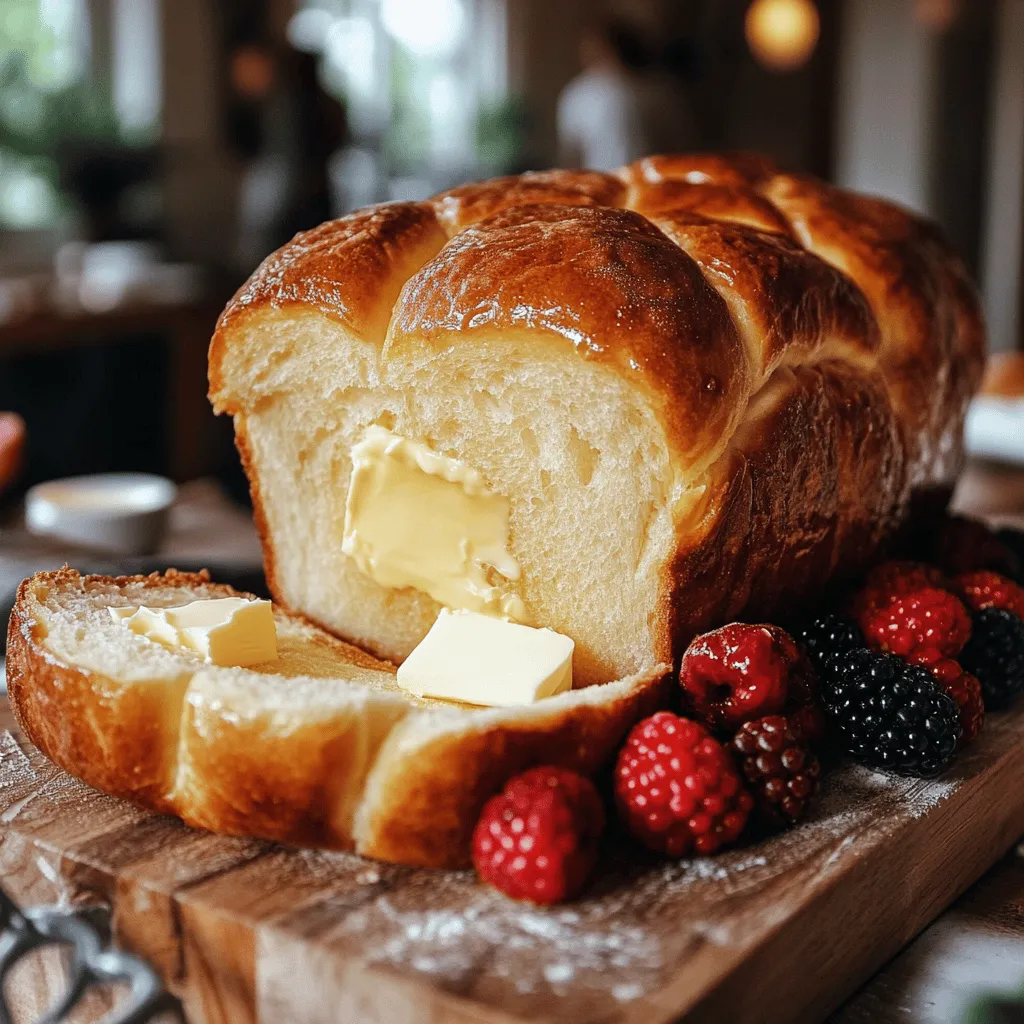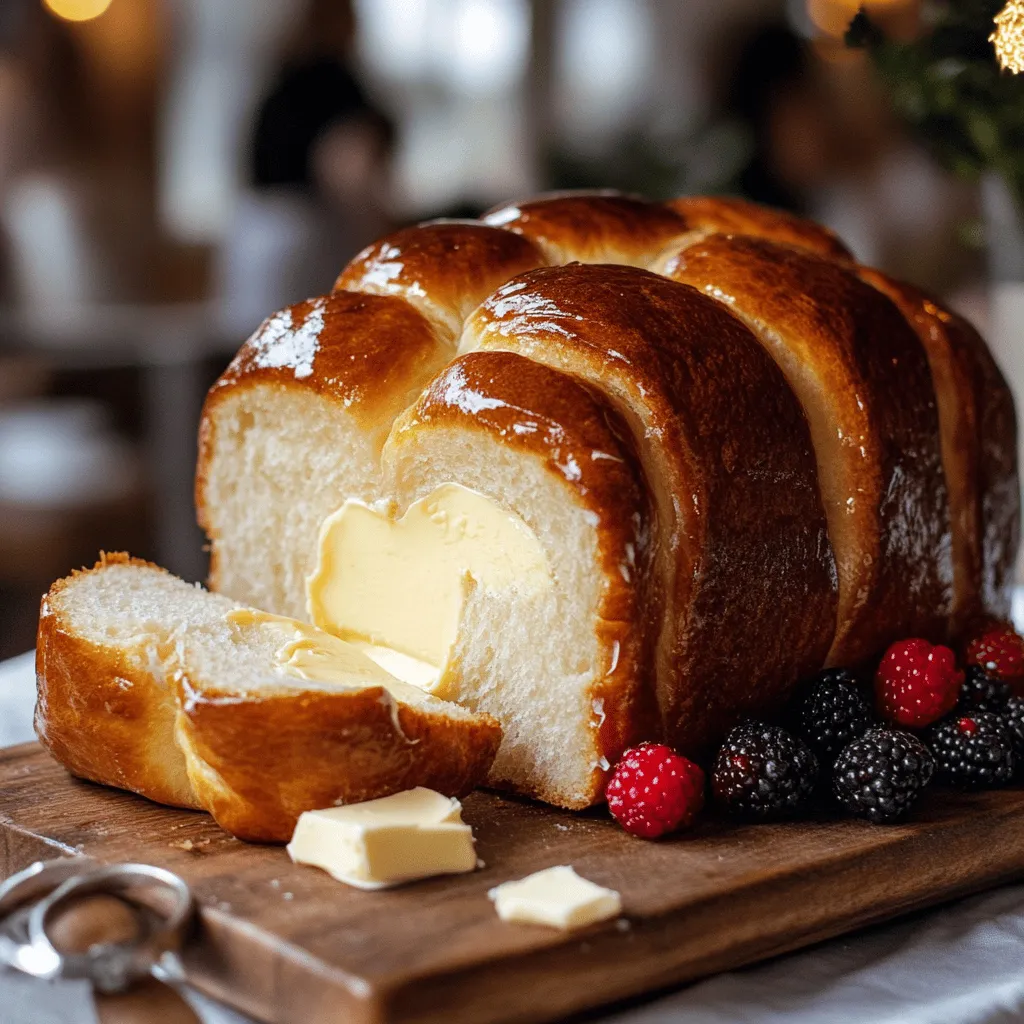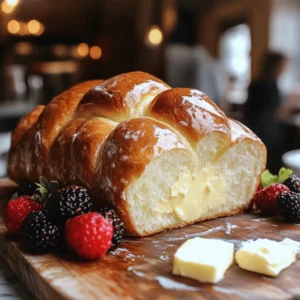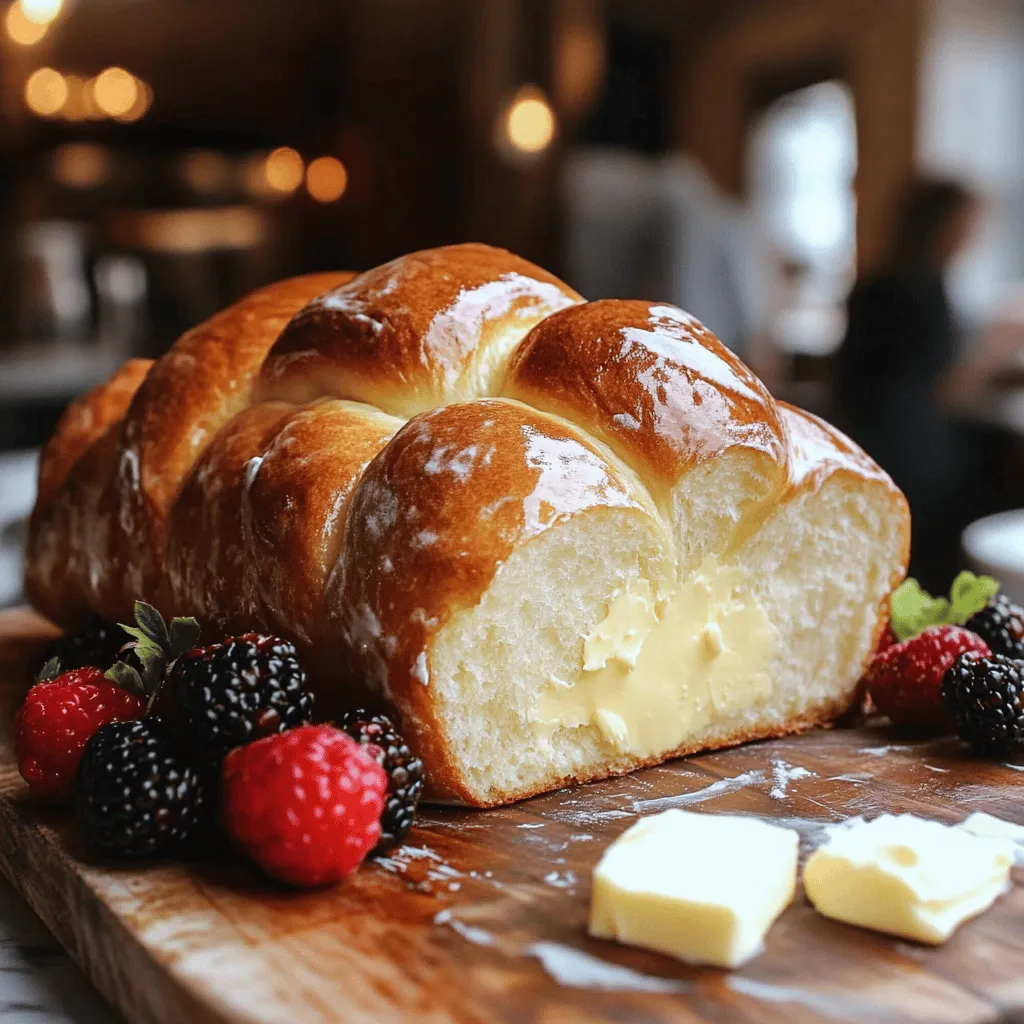Are you ready to bake something special? Today, I’ll show you how to make Brioche Moelleuse Maison, the softest and yummiest brioche you’ll ever taste! With a few key ingredients and clear steps, you’ll impress your family and friends in no time. Let’s dive into the secrets behind this delightful recipe and transform your baking skills. Get ready for some tasty fun in the kitchen!
What Are the Key Ingredients for a Perfect Brioche?
To make a great brioche, you need simple, quality ingredients. Each one plays a key role in achieving that soft and airy texture.
What Flour Should You Use for a Soft Brioche?
I recommend using all-purpose flour. It gives the brioche a nice balance of strength and softness. You can also use bread flour for a bit more chew. Both types work well in a homemade brioche. Make sure to sift the flour. This helps to aerate it, leading to a lighter bread.
How Do Eggs Affect the Brioche Texture?
Eggs are crucial. They add moisture and richness. They also help with the brioche’s rise. Using large eggs at room temperature is best. This helps them blend well with the other ingredients. The yolks give the bread a lovely color, while the whites provide structure.
What Role Does Butter Play in Making Brioche Moist?
Butter is the star of this recipe. It makes the brioche rich and moist. I prefer unsalted butter, as it allows you to control the salt level. Softened butter blends easily into the dough. This is vital for that smooth texture we all love. Use about 200 grams for the perfect balance.
With these key ingredients, you can follow my full recipe to create the perfect brioche moelleuse maison. Enjoy the process and the delicious results!
How Do You Prepare Brioche Dough Step-by-Step?
To make brioche dough, you start with a few simple steps. First, gather your ingredients. You need flour, sugar, salt, yeast, eggs, milk, and butter.
What are the Initial Steps for Mixing the Ingredients?
In a large bowl, mix the flour, sugar, salt, and yeast. Make sure the yeast does not touch the salt directly, as this can harm it. After mixing, create a well in the center. Add the eggs, warm milk, and vanilla. If you want, you can add lemon zest for extra flavor. Then, stir with a wooden spoon until the dough starts to come together.
How Do You Incorporate Butter into the Dough?
Once the dough forms, it’s time to add the butter. Take softened butter and add it gradually. Start with small pieces and mix until it’s fully combined. This step is key to a rich, moist brioche. If the butter is too cold, it won’t mix well.
Why is Kneading Essential for Brioche?
Kneading is crucial for developing the dough. It helps create the gluten structure. Knead the dough on a floured surface for about ten minutes. You can also use a stand mixer with a dough hook. Knead until the dough is smooth and elastic. This step is what gives brioche its lovely texture.
After kneading, form the dough into a ball. Place it in a greased bowl and cover it. Let it rise in a warm spot for 1 to 2 hours, or until it doubles in size. This rising time helps create the light, airy texture we love in brioche. For the complete process, check the Full Recipe.

What Are the Best Tips for Proofing Brioche Dough?
Proofing brioche dough is key to getting that soft, fluffy texture.
How Long Should You Let the Dough Rise?
You should let the dough rise for about 1 to 2 hours. The dough needs time to expand. It should double in size before you shape it again. Keep an eye on it. If your kitchen is warm, it may rise faster.
What Conditions Are Ideal for Proofing?
The best place to proof dough is in a warm spot. A sunny kitchen works well. You can also use an oven with the light on. This creates a cozy, warm space. Avoid drafts and cold areas to ensure proper rising.
How Can You Tell When the Dough is Ready?
To know if the dough is ready, do the poke test. Gently poke the dough with your finger. If the indent springs back slowly, it is ready. If it doesn’t spring back at all, it may be over-proofed. A well-proofed dough feels light and airy.
With these tips, you can avoid common brioche mistakes. Perfectly proofed dough leads to delicious results. For more details, check out the Full Recipe.
What is the Ideal Baking Time and Temperature for Brioche?
To bake the perfect brioche, you need the right time and temperature. This helps create a fluffy brioche bread.
What Temperature Should You Preheat the Oven To?
You should preheat your oven to 350°F (175°C). This temperature allows the brioche to rise well while baking. It helps achieve that golden crust we all love.
How Can You Ensure Even Baking?
To ensure even baking, place the loaf in the center of the oven. This spot provides the best heat flow. You can also rotate the loaf halfway through baking. This way, each side gets equal heat.
When Is the Brioche Finished Baking?
You will know the brioche is done when it turns golden brown. It should sound hollow when tapped on the bottom. This usually takes about 25 to 30 minutes. If it browns too quickly, use aluminum foil to cover it.
Baking brioche at home is fun and rewarding. Follow these tips, and you will enjoy a delightful loaf. If you want to make this delicious brioche, check out the Full Recipe for step-by-step guidance.

What Variations Can You Make with Homemade Brioche?
You can make many fun brioche variations. Adding flavors makes each loaf unique.
How Can You Add Different Flavors to Your Brioche?
To add flavors, try mixing in spices or extracts. Cinnamon or nutmeg can bring warmth. You can also use flavored oils. Orange or lemon zest adds a fresh touch. Even chocolate chips can make your brioche sweeter. Just sprinkle them in the dough as you mix.
What Are Some Fun Fillings for Brioche?
Fillings can turn your brioche into a treat. You can use fruit jams or spreads. Nut butters like almond or hazelnut bring richness. Chocolate spread is another favorite. For savory options, try cheese or herbs. Just remember, less is more. Too much filling can make your brioche soggy.
Can You Make Savory Brioche Recipes?
Yes, savory brioche recipes are delightful. Swap sugar for herbs and cheese. Use rosemary or thyme for a fragrant touch. You can even add cooked bacon or ham for heartiness. Savory brioche pairs well with soups or salads. Each bite will surprise your taste buds in a wonderful way.
For more details and to try the full experience, check the Full Recipe.
How Should You Store and Serve Homemade Brioche?
Storing homemade brioche is easy. First, let it cool completely on a wire rack. Once cool, wrap it in plastic wrap or foil. This keeps it fresh. You can also place it in an airtight container. Store it at room temperature for up to three days. For longer storage, freeze the brioche. Wrap it tightly in plastic wrap and then foil. It can stay in the freezer for up to three months.
How can you serve brioche for breakfast? There are many ways! You can slice the brioche and serve it plain. Add a pat of butter or a spread like jam. For a warm treat, toast the slices in a pan or toaster. Serve with fresh fruit, like berries or bananas. This adds color and flavor to your plate.
What are some creative ways to toast and garnish brioche? You can make a French toast with brioche. Dip slices in a mix of eggs, milk, and vanilla. Cook on a hot skillet until golden. Top with syrup, powdered sugar, or whipped cream. You can also try making a brioche sandwich. Use your favorite fillings like ham and cheese or peanut butter and jelly. These ideas show how versatile brioche can be.
For the best results, refer to the Full Recipe for making brioche. Enjoy your baking adventure!
In this blog post, we explored the essential ingredients for making brioche. Key elements, like quality flour, eggs, and butter, shape its texture and moisture. We also detailed the step-by-step process for preparing brioche dough, proofing tips, and baking methods. Finally, we discussed fun variations and serving ideas.
Baking brioche is a rewarding experience. With these tips in hand, you can master the art of brioche at home. Enjoy the journey and get creative!



